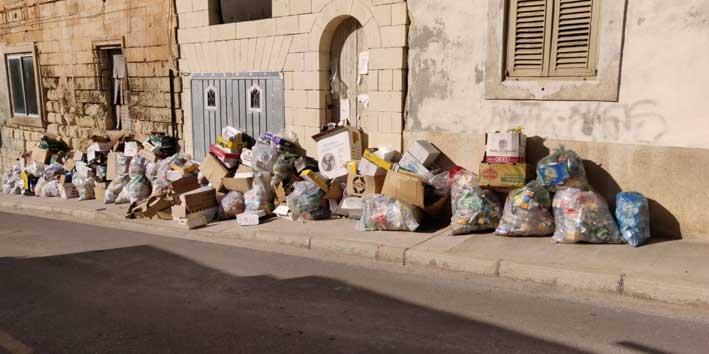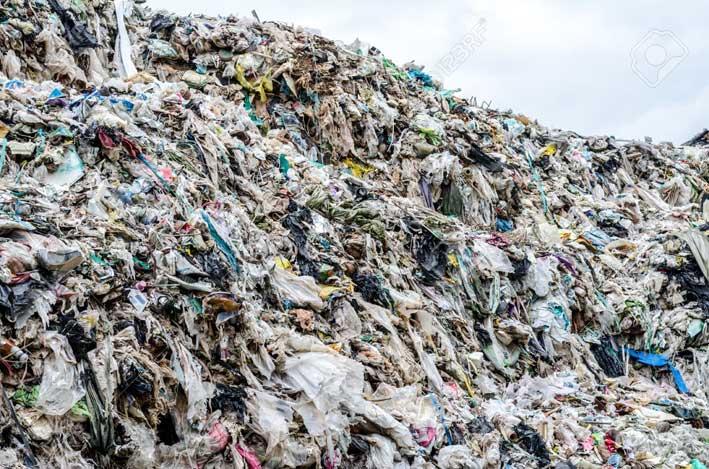The introduction of the organic bag is starting to have positive effects on mixed-waste collection around the Maltese Islands, with over 8,500 tonnes less of mixed black-bag waste delivered to Wasteserv from places across Malta and Gozo in the first three months of 2019, compared to the same three months in 2018.
There is, however, more that needs to be done.
This newsroom looked at the statistics available on the Wasteserv website, in terms of waste quantities delivered to Wasteserv facilities from the different localities around the islands. It is pertinent to note that a number of localities have had organic bag collection as part of a pilot project for a number of years. These are in Gozo, Birkirkara, Bormla, Għaxaq, Kirkop, Marsaxlokk, Mdina, Mġarr, Swieqi and Ta’ Xbiex. The implementation of organic bag collection across the country began towards the end of last year.
The aim of introducing the organic bag was to increase the separation of waste and the collection of more reusable material. From the separation of waste aspect, the introduction of this bag seems to be having a positive effect.
Indeed, when one compares the collective statistics across all localities available on the Wasteserv website for the January to March period in 2017 compared to the same months in 2018, the statistics show that mixed waste collection actually increased by around 2,000 tonnes. It is pertinent to note that from 2016 to 2017, the amount of mixed black-bag waste collected had actually reduced by around 700 tonnes according to the statistics. However, a reduction of over 8,000 tonnes between 2018 and 2019 definitely shows that the organic bag initiative is having the desired effect and that its introduction has had a direct and visible effect on the reduction in mixed waste collection at a time when the population is increasing.
The localities with the highest reduction in black-bag waste collected between when comparing the first three months in 2019 with the same months in 2018 were St Paul’s Bay (860 tonnes), Valletta (601 tonnes) and Mosta (526 tonnes). This does not mean that more cannot be done in these specific localities.
The statistics appearing on the Wasteserv website are based on the collections from Local Council roads. They do not take into consideration the separate collections made by the private sector, such as collections from commercial businesses that may have private collection mechanisms in place, which are also being brought to Wasteserv. Accordingly, the waste generated by those who pay for their own particular collections are not taken into account in these statistics. In addition, any locality that did not have a full first three months of data – which did not apply to many – was not considered in the overall statistics used above.
While the statistics are showing good progress, sources in the industry emphasised that, in heavy tourism and commercial areas, organic waste separation and recyclables collected could be improved, mainly due to a number of commercial outlets and eateries not really separating their waste. Indeed, although there was reduction in black-bag waste collection in St Paul’s Bay, as stated above, according to the statistics it is still the locality with the largest number of black bags collected, with 1,877 tonnes collected between January and March this year. This is closely followed by Birkirkara and Sliema, all of which are fairly commercial areas.
A spokesman for the Environment Ministry who was asked about this said that if one goes to a locality that is predominantly households, then the mix of waste is minimum, but if one goes to St Paul’s Bay or Sliema, for example, which are at the other end of the spectrum, one finds that the data may fluctuate, as some businesses may throw their black bags in with those of residents, thus increasing the statistics. This would mean that this data might not truly reflect the amount of domestic waste collected.

“Households today have an obligation to take out the right bag on the kerbside on the right day,” said the spokesman. However, while there is a social and civic duty to recycle, there is not yet a legal obligation to do this and the spokesman explained that this obligation will be introduced with the Circular Economy Legislation, once this becomes law.
“It will be more complicated to do this for businesses, as we need to define the collection structure, etc. The way businesses operate is different to that of households, and the amount of waste generated by a business is greater than that from a household, so we need a collection system to accommodate that kind of recycling,” the spokesman continued. “For example, I cannot imagine restaurants having all their organic waste collected only on Mondays, Wednesdays and Fridays, so they will need that collection more frequently, provided either by the local council, through third parties or as a scheme.
“Since it is not completely legally binding to separate waste, there are a lot of businesses not separating waste. They cannot just put out any bag they want on the street: they have to put out the right bag on the right day, but some either put organic waste in black bags on the black bag collection day and leave the black bag collector to collect it, or have their own private collection system set-up,” the spokesman pointed out .
The statistics on the website also show a positive trend in recycling numbers (green/grey bag including glass) around the islands, with around 2,500 tonnes more of recyclable material collected in the first three months of 2019 compared to the first three months of 2018. In respect of organic waste, around 6800 tonnes of this was collected in the first three months of 2019, according to the statistics.
The government has also been working on introducing additional measures to improve waste separation, such as the beverage container collection scheme which is currently being worked on, as well as through the single-use plastics strategy which will hopefully reduce the amount of plastic waste around the islands.

Waste per person
At the request of this newsroom, Wasteserv later sent separate statistics regarding the amount of waste generated per person, on average, in each locality. These statistics cover November and December 2018, and January 2019. A Wasteserv representative explained that the data was taken from the weight of material that reached Wasteserv’s facilities, divided by the total population in that locality as at per the 2017 population statistics.
The statistics provided by Wasteserv showed that, in those three months combined, Valletta – with an average of just over 115kg per person – had the highest amount of mixed waste collected in Malta. The second and third localities with the highest amount of mixed waste per person were Kirkop, with 85.6kg, and Pieta, with 84.3kg per person.
The localities with the least mixed waste collected per person in those three months were Qrendi, Pembroke and Marsa, with 26kg, 29.3 kg and 30.2kg per person.
In terms of recyclables (green/grey bag), the three localities in the same months with the least amount registered as being collected per person at Wasteserv sites were Cospicua, with 10.33kg, Safi with 10.38kg and Birzebbugia with 10.62kg.
In the same period, the locality in Malta with the most recyclable waste bags collected was Mtarfa, which saw 27.82 kg of recyclable material per person sent to Wasteserv sites. The second highest was Mqabba, with an average of 25.22kg, followed by Gharghur.
In terms of organic waste bags, the locality with the least amount per person delivered to Wasteserv facilities in those three months was Msida, with 7.03kg. Swieqi and St Paul’s Bay were the second and third lowest, with 7.22kg and 7.35kg respectively. The localities with the highest amount of organic waste collected per person were Birgu, with 34.28kg per person, followed by Mqabba with 25.98kg and Mgarr (Malta) with 25.10 kg per person.
Gozo
In terms of statistics for Gozo, Wasteserv did not have the statistics for waste collected per person but did have them per occupied household. In terms of mixed waste, the three localities with the highest amount were San Lawrence, with 82.66kg per occupied household, Zebbug (71.85kg) and Gharb (67.50kg). These statistics are for the average quarter in 2018.
Sannat, with (45.81kg), Ghajnsielem, with (53.13kg) and Xaghra (53.57kg) had the least amount of mixed waste collected per occupied household.
In terms of recyclable material, Sannat, San Lawrenz and Qala had the largest amount of recyclable material sent to Wasteserv sites, while Zebbug, Munxar and Ghajnsielem had the smallest.
In respect of organic waste, the localities with the highest amount collected per occupied household were Fontana, Kercem and San Lawrenz, and those with the least were Zebbug, Qala and Ghajnsielem.